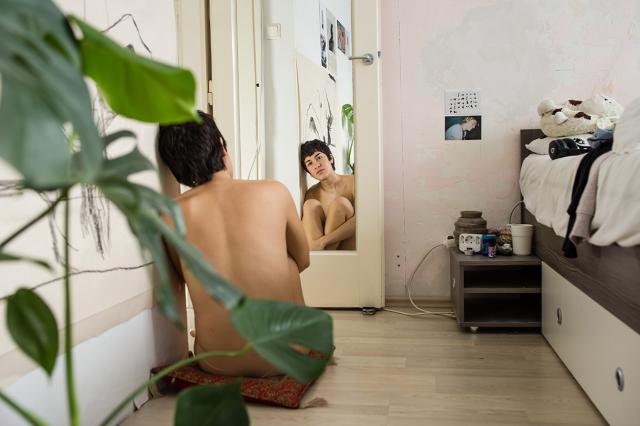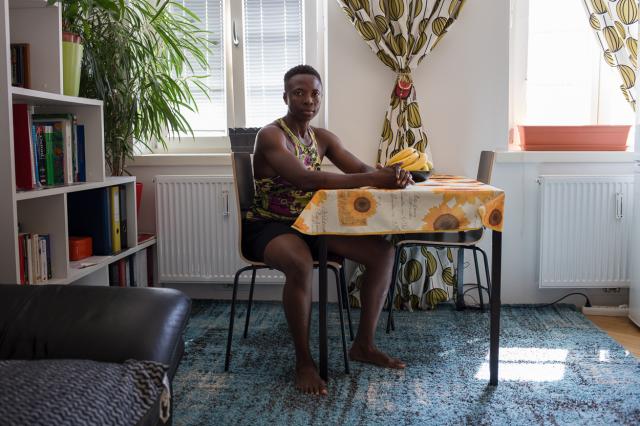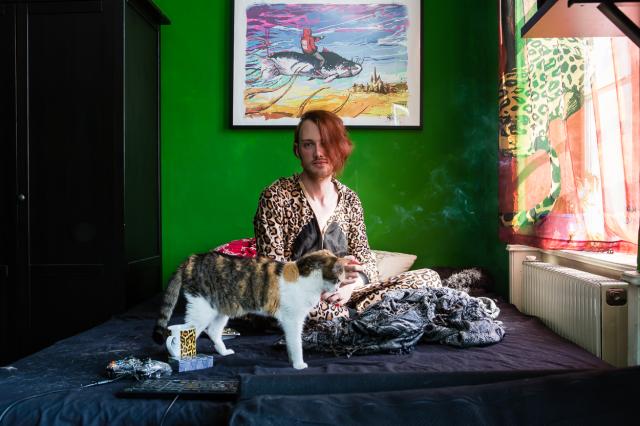At Home: Living in community
My photography work is focused on bodies, identities, and people’s narratives. It is strongly influenced by intersectional feminist thought and many years of queer activism. My tool is mostly a digital camera, and portraiture is the medium through which I approach my subjects. The motivation to take a portrait – whether of myself or other people – stems, not only from my fascination with bodies but includes everything that surrounds and interacts with them: colors, light, objects; for that reason, I often use 35 mm lens. Portraiture is my way of confronting social norms and their effects on our mental and physical wellbeing – it´s a method that allows for the expression of struggle, as much as pride and rebellion. For me, the act of taking a portrait is a process of connecting empathetically to the person I photograph. This connection is the basis for what is encaptured in the portrait.
At Home is a series of portraits of queer people, created between 2016 and 2020 and as a documentary photography project, which gives its protagonists, LGBTIQ+ people, space to show themselves in a very private environment of their homes. The project is participative and encourages people to choose where and how they want to be portrayed.
I have started this series of photographs while living in the Türkis Rosa Lila Villa, a political project and a community centre in Vienna, organized by and for lesbians, gays, bisexuals, inter, and trans* people. The house was squatted in 1982 and today unites a couple of projects: living, counselling, and gastronomy.
I lived in “The Villa” there for 3 years and during that time I got very inspired by that place of 11 people living together. Even though we didn’t all live in the same flat, living in the same house and being engaged in the community work gave me a strong feeling of mutual belonging. I’ve started photographing my housemates in their rooms mostly because I wanted to become closer to them, to get to know them better. It was my way of showing care and appreciation for being in my life, in the house, for supporting me, and letting me support them.
The Türkis Rosa Lila Villa is an important place for Vienna and Austria, gathering a lot of queer people who seek content apart from the mainstream and hetero-normative society, some of who I have also included in the project after I moved out.
For me, participation in the project is very important. I don't call the people I photograph models, but participants in the project. By involving people in the concept itself, I not only get authentic photographs but also break the hierarchical relationship between the photographer and the model. I think that is of great importance for working with discriminated groups.








